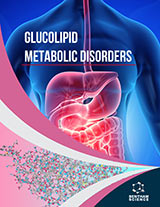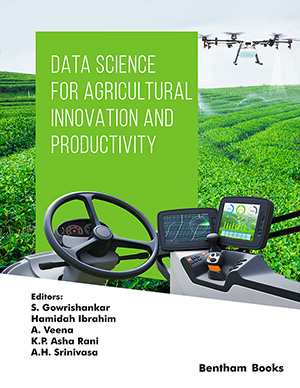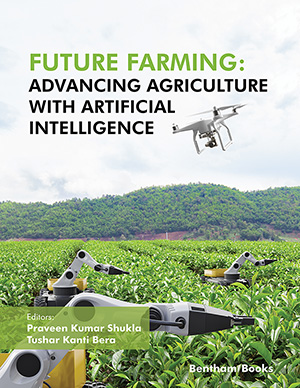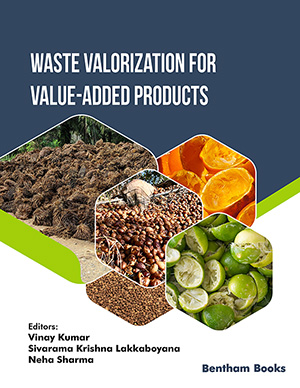[2]
Noor, N.; Satapathy, K.B. Phytodiversity of Dhauligiri hill and its adjoining area, Odisha, India: a floristic approach. Plant Arch., 2020, 20(1), 2093-2102.
[3]
Sree, M.D.; Joshna, A.; Lakshmi, S.M.; Kumar, D.S. A review on South Indian edible leafy vegetables. J. Glob. Trends Pharm. Sci., 2013, 4(4), 1248-1256.
[5]
Wahengbam, S.; Kaur, G. Review on Plants extract as anti-urolithiatic and pathogenesis of urolithiasis induced by ethylene glycol. Eur. J. Mol. Clin. Med., 2020, 7(7), 4600-4615.
[6]
Singh, MK; Nagori, K; Tripathi, DK Potential analgesic & anti-pyretic herbal drugs: a comparative review of marketed products. Int. J. Phytomedicine., 2010, 2(3), 197-209.
[7]
Gaikwad, K; Dagle, P; Choughule, P; Joshi, YM; Kadam, V A review on some nephroprotective medicinal plants. Int. J. Pharm. Sci. Res., 2012, 3(8), 2451.
[8]
Rathva, B.; Patel, B.; Maurya, J.; Bera, K. Standardization and evaluation of some parameters of adaptogenic polyherbal oral dosage form. Int. J. Pharm. Sci. Rev. Res., 2017, 42(1), 1-7.
[10]
Maiti, B. Antineoplastic effects of the root extract of Hygrophila spinosa. Proceedings of the International Conference on Current Progress in Medicinal and Aromatic Plant Research, Calcutta, India1994, pp. 135-40.
[11]
Pal, A.; Paul, A.K. Bacterial endophytes of the medicinal herb Hygrophila spinosa T.Anders and their antimicrobial activity. J. Pharm. Res. Int., 2013, 795-806.
[13]
Dash, A.K.; Dutta, G.K.; Sardar, K.K.; Sahoo, G. Ethnomedicinal importance of Hygrophila spinosaT. Anders: A review. Plant Arch., 2012, 12(1), 5-9.
[14]
Patra, A.; Jha, S.; Murthy, P. Phytochemical and pharmacological potential of Hygrophila spinosa T. anders. Pharmacogn. Rev., 2009, 3(6), 330.
[17]
Silja, V.P.; Varma, K.S.; Mohanan, K.V. Ethnomedicinal plant knowledge of the Mullukuruma tribe of Wayanad district, Kerala. Indian J. Tradit. Knowl., 2008, 7, 604-612.
[20]
Chanda, S.; Baravalia, Y. Screening of some plant extracts against some skin diseases caused by oxidative stress and microorganisms. Afr. J. Biotechnol., 2010, 9(21), 3210-3217.
[22]
Preethi, G.P.; Gopalakrishna, H.N.; Rathnakar, U.P.; Durga, P.; Shenoy, J. Acute diuretic activity of alcoholic extracts of Hygrophila auriculata seeds in normal wistar albino rats. Int. J. Pharma Bio Sci., 2012, 3(1), 283-289.
[23]
Nadkarni, K.M. Indian Materia Medica; Popular Prakashan: Bombay, India, 1978.
[26]
Ali, A.; Tripathi, S.K. A pentacyclic triterpenoid from Asteracantha longifolia Ness. Asian J. Chem., 2007, 19(5), 3765.
[27]
Shahid, M.; Khan, M.; Hameed, A.; Ashraf, M.; Jamil, A. Antioxidant enzymes and inorganic elements in seeds and leaves of four potential medicinal plants from Pakistan. Agrochimica, 2012, 56(6), 281-291.
[28]
Patra, A.; Murthy, N.P.; Jha, S. Pharmacognostical standardization of leaves of Hygrophila spinosaT.Anders. Phcog. J., 2009, 1(2), 82-87.
[30]
Parashar, V.V.; Singh, H. Investigation of Astercantha longifolia Nees. Indian J. Pharmacol., 1965, 27(4), 109-113.
[32]
Govindachari, T.R.; Nagarajan, K.; Pai, B.R. Isolation of lupeol from the root of Asteracantha longifolia Nees. Indian J. of Sci. Res. B., 1957, 16, 72.
[33]
Choudhary, B.K.; Bandyopdhyay, N.G. Important of mineral content and medicinal properties of Moringa oleifera and Hygrophila auriculata. Sacitra Ayurveda, 1980, 50(7), 543-549.
[36]
Vyas, N.; Raval, M. Quantification of two marker compounds from unsaponifiable matter of Hygrophila spinosaseeds using validated TLC-Densitometric method. Int. J. Pharm. Res, 2015, 7(4), 39-46.
[37]
Hussain, A.Z.; Kumaresan, S. GC-MS analysis and antimicrobial activity of Hygrophila auriculata. Arch. Appl. Sci. Res., 2013, 5(5), 163-168.
[38]
Maji, A.K.; Maity, N.; Banerji, P.; Banerjee, D. Validated RP-HPLC-UV method for the determination of betulin in Asteracantha longifolia (L.) Nees. extract. Int. J. Phytomed., 2013, 5(2), 131-135.
[39]
Maji, A.K.; Pandit, S.; Banerji, P.; Banerjee, D. A validated RP-HPLC method for simultaneous determination of betulin, lupeol and stigmasterol in Asteracantha longifolia Nees. Int. J. Pharma Sci., 2014, 6(5), 691-695.
[40]
Jayaprakasam, R.; Ravi, T.K. In vitro screening of the biological activity of combined extracts of two medicinal plants and their standardization by validated analytical methods using standard markers. J Pharmacogn Phytochem., 2019, 8, 2305-2312.
[49]
Raju, B.S.; Battu, G.R.; YB, M.L. Antihepatotoxic Activity of Hygrophila Spinosa Roots on CCl4 induced Hepatic Damage in Rats. Pharm. Res., 2011, 2(2-3), 152-155.
[50]
Sultana, S.; Ahmed, S.; Sharma, S.; Khan, N. Asteracantha longifolia suppresses oxidant-induced tissue injury and proliferation in rat liver. Asia Pacific. J. Pharmacol., 2006, 16(3/4), 123.
[53]
Lina, S.M.; Ashab, I.; Ishtiaq Ahmed, M.; Shahriar, M. Hepatoprotective activity of Asteracantha longifolia (Nees.) extract against anti-tuberculosis drugs induced hepatic damage in Sprague-Dawley rats. Pharmacologyonline, 2012, 3, 13-19.
[56]
Mariappan, A.; Ramalingam, S.; Hameed, S.S.; Saravanan, R. In vivoInvestigation of hepatoprotective activity of Asteracantha Longifolia nees. on CCl4 induced hepatotoxicity in Wistar Albino Rats. Asian J. Pharm. Clin. Res., 2015, 218-222.
[57]
Abirami, N.; Shanmugaraju, V.; Mahalakshmipriya, A.; Rajathi, K. In vitro hepatoprotective and antioxidant activities of the leaf ethanolic and aqueous extracts of Asteracantha longifolia and Andrographis paniculata against lead acetate induced toxicity. Biosci. Biotechnol. Res. Asia, 2017, 6(1), 341-350.
[60]
Gurusamy, K.; Kokilavani, R.; Arumuasamy, K. Hepatoprotective activity of polyherbal formulation against carbon tetrachloride-induced hepatotoxicity in rats. Afr. J. Biotechnol., 2010, 9(49), 8429-8434.
[61]
Kshirsagar, A.D.; Ashok, P. Hepatoprotective and antioxidant effects of Hygrophila spinosa (K. Schum) Heine Acanthaceae stem extract. Biosci. Biotechnol. Res. Asia, 2016, 5(2), 657-662.
[68]
Vyas, N.; Gamit, K.; Raval, M. Aphrodisiac and Spermatogenic Potential Of Unsaponifiable Fraction From Seeds Of Hygrophila spinosaT. Ander In Rats. Int. J. Pharm. Sci. Res., 2020, 11(10), 4902-4909.
[69]
Dominic, S.; Padmaja, V. Protective Effect of An Herbal Extract in Amlodipine Induced Testicular Dysfunction In Rats. Infertility. Hygeia: J. for Drugs and Medicines, 2017, 9(1), 22-42.
[70]
Dominic, S; Padmaja, V Preliminary study on the altered expression of 3β HSD gene in rat testis after Amlodipine and its modification by Astercantha longifolia seed extract. Hygeia: J. for drugs and medicines., 2014, 6(1), 6-11.
[75]
Sathish, R.; Natarajan, K.; Nikhad, M.M. Effect of Hygrophila spinosa T. anders on ethylene glycol induced urolithiasis in rats. Asian J. Pharm. Clin. Res., 2010, 3(4), 61-63.
[79]
Hardik, K.S.; Vrushali, V.P.; Jitendra, D.V.; Vandana, B.P.; Ghanshyam, R.P. Pharmacological evaluation of anti-urolithiatic activity of UCEX01-a herbo-mineral Ayurvedic formulation. J. Pharm. Biomed. Sci., 2013, 35, 1834-1839.
[80]
Thangarathinam, N.; Jayshree, N.; Metha, A.V.; Ramanathan, L. Development, standardization and evaluation of a polyherbal syrup. Int. J. Pharm. Sci. Rev. Res., 2013, 20, 149-154.
[82]
Hussain, S.; Ahmed, N.; Ansari, Z. Preliminary studies on diuretic effect of Hygrophila auriculata (Schum) Heine in rats. Int. J. of Health Res, 2009, 2(1), 59-64.
[83]
Babar, V.B. Comparative diuretic study of medicinal plants in individual and combination form. PharmaTutor, 2017, 5(4), 42-45.
[84]
Patra, A.; Jha, S.; Murthy, P.N. Diuretic activity of different extracts of leaves of Hygrophila spinosaT. Anders (Acanthaceae). Indian Drugs, 2011, 48(07), 50-53.
[85]
Kumar, T.; Chandrashekar, K.S.; Tripathi, D.K.; Nagori, K.; Pure, S.; Agrawal, S.; Tamsil, A.J. Standardization of “GokshuradiChurna”: An ayurvedic polyherbal formulation. J. Chem. Pharm. Res., 2011, 3(3), 742-749.
[87]
Ingale, K.G.; Vyawahare, N.S.; Gautam, D.T.; Baviskar, N.D.; Bakal, R.L. The Antihypertensive effect of methanolic extract of Hygrophila spinosain Rats. Int. Res. J. Pharm. Appl. Sci., 2014, 4(4), 7-10.
[89]
Muthulingam, M. Antidiabetic efficacy of leaf extracts of Asteracantha longifolia (Linn.) Nees. on alloxan induced diabetics in male albino wistar rats. Int. J. Pharm. Biomed. Res., 2010, 1(2), 28-34.
[91]
Rastogi, A.; Shankar, S.; Mahalingam, G. Antidiabetic activity of methanolic extract of Hygrophila auriculata in adult male wistar rats. J. of Pharm. Sci. and Res, 2015, 7(3), 98.
[92]
Doss, A.; Anand, S.P. Evaluation of anti-diabetic activity of methanol and aqueous extract of Astercantha longifolia (Linn) Nees. Res. J. of Phrmacol, 2014, 8(1), 1-5.
[93]
Rastogi, A.; Shankar, S.R.; Mahalingam, G.A. Phytochemical screening, antioxidant activity and in vitro anti-diabetic activity of aqueous, methanolic, ethanolic and chloroformic extracts of Hygrophila auriculata. Int. J. Pharm. Pharm. Sci., 2014, 6(5), 557-560.
[97]
Anusha, P.; Immanuel, S.R. Antioxidant and antibacterial activities of leaves extract of Hygrophila auriculata (Schumach.) Heine. J. Pharmacogn. Phytochem., 2019, 8(2), 1784-1789.
[98]
Raaman, N. Antioxidant activites and phytochemical analysis of methanol extract of leaves of Hygrophila auriculata (Schumach) heine. Int. J. Curr. Pharm. Res., 2015, 7(4), 100-105.
[99]
Vijayakumar, M.; Govindarajan, R.; Shirwaikar, A.; Kumar, V.; Rawat, A.K.; Mehrotra, S.; Pushpangadan, P. Free radical scavenging, and lipid peroxidation inhibition potential of Hygrophila auriculata. Nat. Prod. Sci., 2005, 11(1), 22-26.
[100]
Hussain, M.S.; Ahamed, K.F.; Ravichandiran, V.; Ansari, M.Z. Evaluation of in vitro free radical scavenging potential of different fractions of Hygrophila auriculata (K. Schum) Heine. Asian J. Tradit. Med., 2009, 4(5), 179-187.
[101]
Sridhar, M.P.; Nandakumar, N.; Rengarajan, T.; Balasubramanian, M.P. Amelioration of mercuric chloride induced oxidative stress by Hygrophila auriculata (K. Schum) Heine via modulating the oxidant-antioxidant imbalance in rat liver. J. Biochem. Technol., 2013, 4(3), 622-627.
[106]
Pattanayak, S.P.; Sunita, P. Antitumor potency and toxicology of an Indian Ayurvedic plant, Hygrophila spinosa. Pharmacologyonline, 2008, 2(1), 361-371.
[108]
Nabere, O.; Samson, G.; Adama, H.; Moussa, C.; Eric, S.P.; Aminata, N.P.; Jeanne, M.R.; Germaine, N.O. Antioxidant, and anticancer activities of polyphenolic compounds from three Acanthaceae medicinal species from Burkina Faso. Int. J. Phytomed., 2012, 4(4), 552.
[112]
Patra, A.; Jha, S.; Murthy, P.; Satpathy, S.; Kumar, T. Preliminary phytochemical screening and antipyretic activity of leaf and root of Hygrophila SpinosaT.Anders. Pharmacologyonline, 2009, 1, 449-453.
[114]
Shetty, S.C.; Bhagat, V.C.; Kore, K.J.; Shete, R.V. Screening of Astercantha Longifolia nees for it’s anti-inflammatory activity. Indian Drugs, 2008, 45(3), 215.
[121]
Boparai, A.; Niazi, J.; Bajwa, N. Betulin a pentacyclic tri–terpenoid: an hour to rethink the compound. Open Access J. Trans. Med. Res, 2017, 1(2), 53-59.
[125]
Gurupriya, S.; Cathrine, L. Molecular docking studies of isolated compounds andrographolide and betulin from methanolic leaves extract of andrographis echioides as alpha-amylase and alpha-glucosidase activators. Int. J. Of Appl. Pharm., 2021, 121-129.
[127]
Maharani, M.G.; Lestari, S.R.; Lukiati, B. Molecular docking studies flavonoid (quercetin, isoquercetin, and kaempferol) of single bulb garlic (Allium sativum) to inhibit lanosterol synthase as anti-hypercholesterol therapeutic strategies. AIP Conference Proceedings, 2021, 2231(1), p. 040021.
[131]
Patil, A.G.; Prakash, J.K.; More, S.S.; Chandramohan, V.; Zameer, F. Exploring Banana phytosterols (Beta-sitosterol) on tight junction protein (claudin) as anti-urolithiasis contributor in Drosophila: A phyto-lithomic approach. Inform. Med. Unlocked, 2022, 100905.
[135]
Satpathy, S.; Patra, A.; Ahirwar, B.; Hussain, M.D. Process optimization for green synthesis of gold nanoparticles mediated by extract of Hygrophila spinosa T. Anders and their biological applications. Physica E, 2020, 121, 113830.
[136]
Koperuncholan, M. Bioreduction of chloroauric acid (HAuCl4) for the synthesis of gold nanoparticles (GNPs): Special empathies of pharmacological activity. Int. J. Phytopharm, 2015, 5(4), 72-80.






























